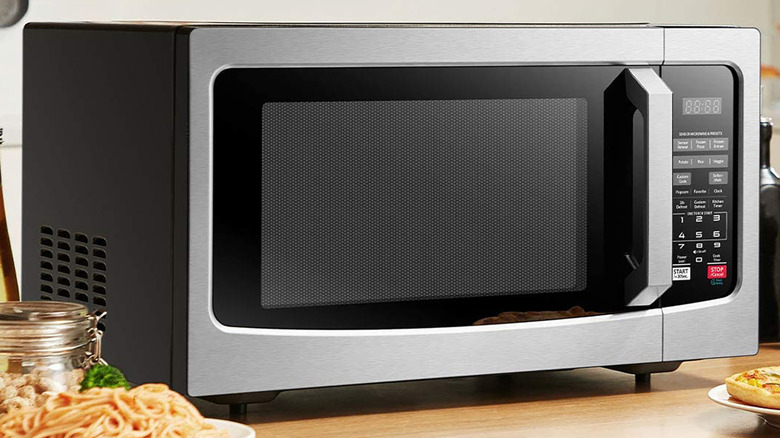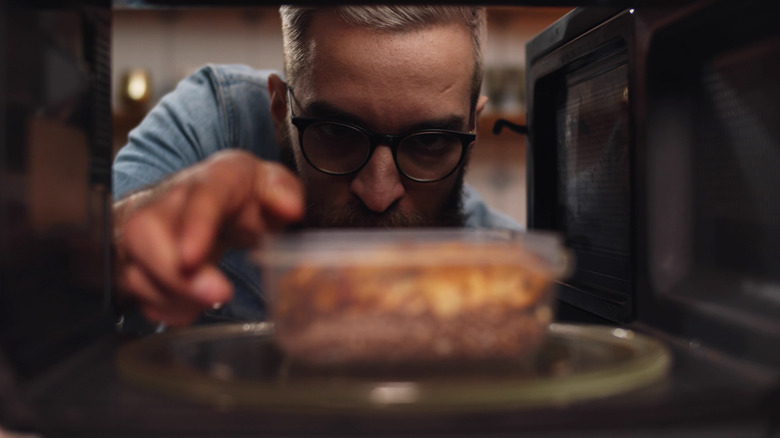How The Microwave Was An Accidental Invention
Chances are, you've probably used a microwave at least once in your life. In fact, the chances are high you've already used one at least once today. Microwaves are a quick, easy, and convenient way to heat up everything from pizza rolls to yesterday's leftovers — and the ubiquitous kitchen appliance was invented entirely by accident. The incredible heating power of the microwave was only discovered thanks to some fortuitous timing, and a yummy chocolate candy bar.
In 1945, a talented engineer named Percy Spencer was working for the Raytheon Corporation, studying magnetrons, which are "vacuum tubes that produce microwave radiation," according to Live Science. One day at work, he just happened to have a peanut cluster candy bar in his pocket while he was testing a magnetron, and to his surprise, when he reached into his pants pocket, he discovered that the candy bar had melted in his pocket into what he described as "a gooey, sticky mess," via Popular Mechanics. Curious, he began to test other foods, including popcorn kernels and eggs, only to find that microwave energy warmed all of them. Spencer then created a metal box to contain the microwave power, enabling it to heat much faster than a conventional oven, and in 1945 he filed a patent for his new invention.
The first microwaves were large, commercial-sized ovens
The first patented commercial microwave, called the RadaRange, stood almost six feet tall, with 750 pounds of expensive heating technology, according to Business Insider. At first, it was used in industrial-sized commercial kitchens, where it took up to 20 minutes to warm up before it could be used. However, throughout the next two decades, Raython continued to innovate, releasing a smaller, cheaper domestic microwave oven in 1967, according to The Southwest Museum of Engineering, Communication and Computation. Although microwaves are now just one of the most common appliances in every kitchen, it actually took a fair amount of time for the new invention to catch on. Back in the 1960s, people were understandably a little skittish about using microwave radiation in their homes, so they were somewhat hesitant to purchase the first at-home models.
That all changed by the 1970s, when new iterations of the invention — sleeker, safer, cheaper, and small enough to fit on an average countertop — began to become available to consumers. Soon, the appeal of their speed and convenience began to outweigh any fears and anxieties over radiation. By 1975, microwaves were outselling the more outdated gas ranges. These days, about 90% of American households have at least one microwave, according to the Bureau of Labor Statistics. Popcorn, anyone?

